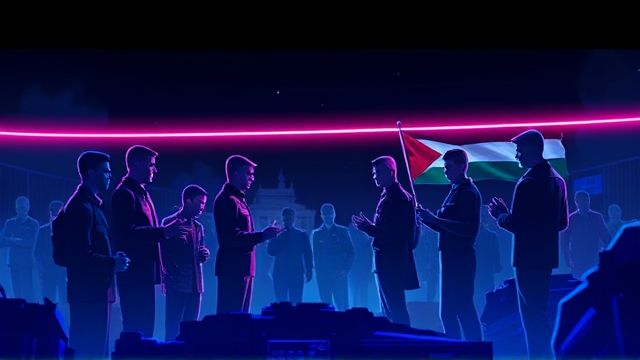Israeli and Palestinian Prisoners Freed in Exchange
In a high-stakes geopolitical maneuver that analysts are already comparing to a tense hostage exchange from a Cold War thriller, Israeli and Palestinian prisoners were freed today in a swap that marks the most significant confidence-building measure in two years of devastating conflict in Gaza. This isn't merely a prisoner exchange; it's a calculated de-escalation, a fragile thread of diplomacy pulled taut against the backdrop of relentless urban warfare and profound humanitarian crisis.The immediate tactical win is clear: families are being reunited, a temporary halt to hostilities has taken hold, and aid corridors are, for the moment, open. But the strategic landscape is far more complex and fraught with risk.From a political risk perspective, this exchange functions as a leading indicator, a signal that the warring parties, along with their international backers, may have reached a point of mutually assured exhaustion. The cost of continuing the conflict—measured in international condemnation, economic strain, and sheer military attrition—has potentially outweighed the perceived benefits for both sides, creating a narrow window for negotiation.However, the precedent set by such swaps is a double-edged sword. While it creates a tangible framework for future talks, potentially paving the way for a more permanent ceasefire, it also reinforces a brutal calculus where captured soldiers and detained militants become bargaining chips, incentivizing future captures.The shadow of the 2011 Gilad Shalit exchange, which saw over 1,000 prisoners released for a single Israeli soldier, looms large; several of those released in that deal were later implicated in further violence, a fact that hardliners in the Israeli cabinet are undoubtedly citing behind closed doors. For the Palestinian Authority, the return of prisoners is a massive political victory, bolstering their legitimacy against rivals like Hamas, but it also raises public expectations to unsustainable levels.The core issues—borders, the status of Jerusalem, the right of return—remain entirely unaddressed. This exchange is therefore best understood not as a peace treaty, but as a volatile ceasefire, a temporary lull that could either solidify into a lasting détente or shatter spectacularly at the next provocation.The key variables to watch now are the durability of the truce, the flow of reconstruction aid into Gaza, and the political maneuvers within the Israeli governing coalition and the Palestinian leadership factions. A single rocket attack, a targeted assassination, or an inflammatory statement could unravel this entire delicate framework, plunging the region back into a cycle of retaliation that has, for decades, proven impossible to break. The risk of a rapid re-escalation remains critically high, making this moment one of cautious, tenuous, and perilous hope.
Latest News
In a move that will undoubtedly be dissected by historians and political strategists for years to come, President Trump has formally signed a Gaza peace plan,
56 minutes ago0 comments
In a move that will be scrutinized by historians for its geopolitical weight, the initial phase of a Gaza ceasefire deal was formally signed in Sharm
1 hour ago0 comments
The political foundations of Madagascar trembled this week as President Andry Rajoelina announced from an undisclosed safe house that he had survived a direct
1 hour ago1 comments
The scene was one of profound disarray, a stark contrast to the solemn dignity one expects when crossing the final threshold into American life.
1 hour ago1 comments
In a development that geopolitical risk analysts have been modeling for months, a significant hostage and prisoner exchange between Israel and Palestinian
2 hours ago1 comments
The political stability of Madagascar, an island nation perpetually teetering on the edge of crisis, has been violently upended.
2 hours ago0 comments
In a move that will be scrutinized by historians for its parallels to the grand diplomatic gambits of the twentieth century, President Donald Trump has
2 hours ago1 comments
In a high-stakes geopolitical maneuver that analysts are already comparing to a tense hostage exchange from a Cold War thriller, Israeli and Palestinian
2 hours ago0 comments
It’s quiet here...Start the conversation by leaving the first comment.
